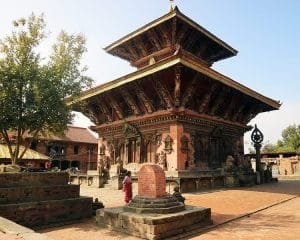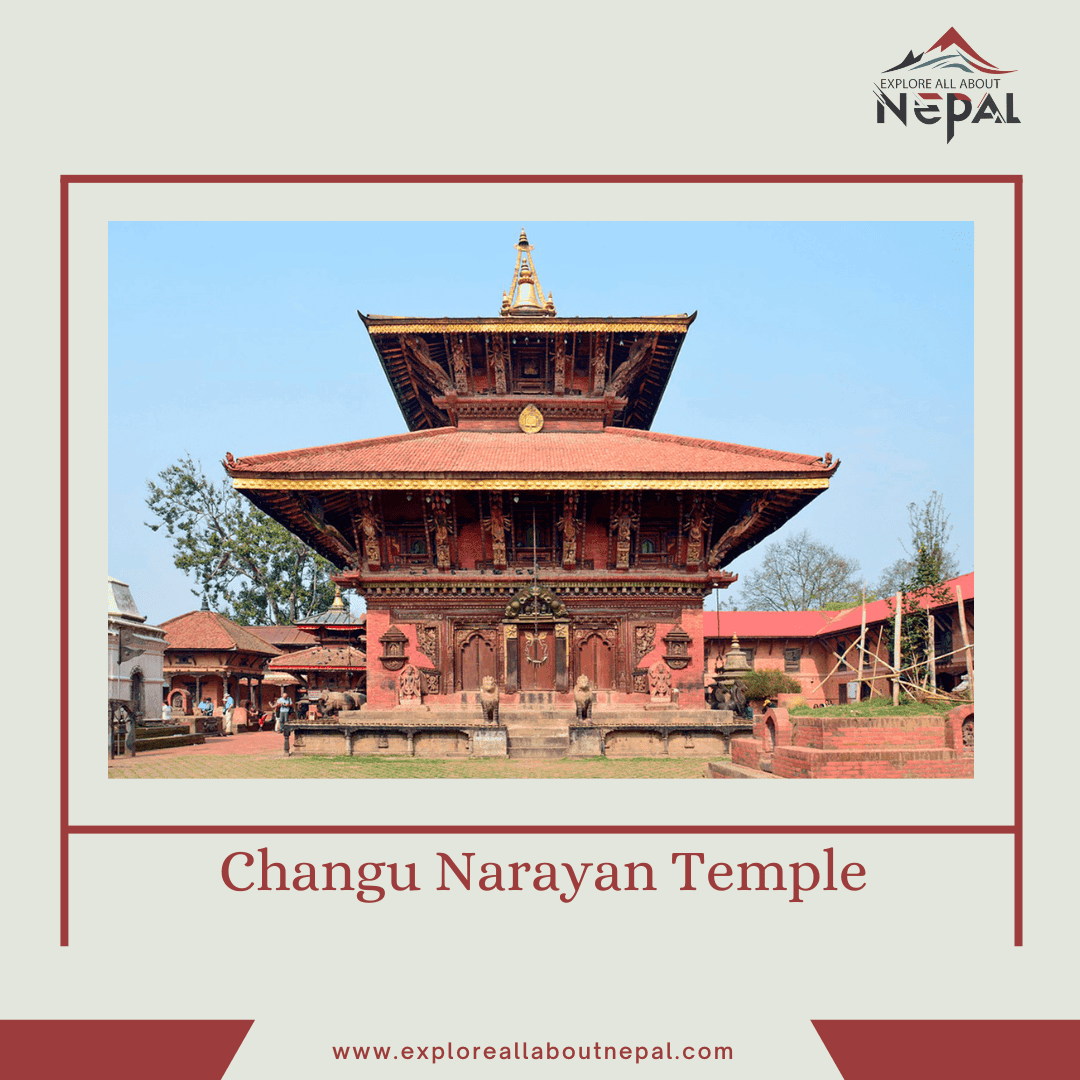Changu Narayan Temple is one of Nepal’s most revered and historically significant Hindu temples. With a history spanning over 1,600 years, it stands as a testament to Nepal’s rich architectural and cultural heritage. Located atop a hill in the Bhaktapur district, this UNESCO World Heritage Site is dedicated to Lord Vishnu and showcases intricate wood and stone carvings that date back to the Licchavi period. In this comprehensive guide, we explore the history, architecture, religious significance, and travel information related to Changu Narayan Temple.

Historical Background of Changu Narayan Temple
Changu Narayan Temple is believed to have been built around the 4th century during the Licchavi dynasty. According to historical records, King Mandev I, the first historical king of Nepal, commissioned the temple, making it one of the oldest known Hindu temples still in existence in the country.
Key Historical Facts:
- Foundation Period: Established in the 4th century AD during the Licchavi dynasty.
- Dedication: The temple is dedicated to Lord Vishnu, known as Narayan in Hinduism.
- UNESCO Heritage Site: Recognized as part of the Kathmandu Valley UNESCO World Heritage Sites in 1979.
- Survived Natural Disasters: The temple has endured earthquakes, with major reconstructions over the centuries, including after the 2015 Nepal earthquake.
Architectural Marvel of Changu Narayan Temple
The architecture of Changu Narayan Temple is a fine example of Nepalese temple craftsmanship. The temple complex consists of traditional pagoda-style structures adorned with intricate carvings and statues that narrate Hindu mythology.
Notable Architectural Features:
- Pagoda-Style Structure: The temple follows a classic two-tiered pagoda structure, which is a defining feature of traditional Nepalese architecture.
- Intricate Wood & Stone Carvings: The temple features detailed carvings of deities, mythical creatures, and historical inscriptions that date back to the 5th century.
- Garuda Statue: A striking statue of Garuda, the mount of Vishnu, kneeling in front of the temple, symbolizes devotion and protection.
- Stone Inscriptions: The temple houses the oldest known stone inscription in Nepal, dating back to 464 AD, providing historical records of the Licchavi dynasty.
- Four-Entrance Gateways: Each entrance is guarded by life-sized stone lions, elephants, and other symbolic figures that reflect ancient Nepalese art.
Religious and Cultural Significance
Changu Narayan Temple is not only an architectural masterpiece but also a vital center of religious and spiritual importance for Hindus. Devotees visit the temple to seek blessings from Lord Vishnu, who is worshipped in various incarnations within the temple premises.
Festivals Celebrated at Changu Narayan Temple:
- Changu Narayan Jatra: A local festival celebrated in Bhaktapur in honor of Lord Vishnu.
- Haribodhini Ekadashi: One of the most significant Vishnu festivals, marking the end of the monsoon season.
- Maha Shivaratri & Teej: Though dedicated to Shiva and Parvati, these festivals attract numerous devotees to Changu Narayan.
- Dashain & Tihar: The temple witnesses an influx of worshippers during these grand Hindu festivals.
How to Visit Changu Narayan Temple
If you are planning a visit to this historic temple, here’s all the essential travel information you need:
Location:
- Situated in Bhaktapur District, about 12 km east of Kathmandu.
- Perched on a hilltop, offering panoramic views of the Kathmandu Valley.
How to Get There:
- By Bus: Public buses and micro-vans from Kathmandu to Bhaktapur are available; from Bhaktapur, hire a local taxi.
- By Private Vehicle: A more convenient option for direct travel.
- By Hiking: Many visitors choose a scenic hike from Nagarkot to Changu Narayan, a beautiful route through traditional villages and farmlands.
Entry Fee:
- For Nepali Citizens: Free
- For SAARC Nationals: NPR 100
- For Foreigners: NPR 300
Best Time to Visit Changu Narayan Temple
The temple is open year-round, but the best time to visit is:
- Spring (March-May): Pleasant weather, clear skies, and vibrant landscapes.
- Autumn (September-November): Ideal for sightseeing and cultural exploration.
- Festival Seasons: Visiting during Hindu festivals provides a rich cultural experience.
Nearby Attractions
While visiting Changu Narayan Temple, consider exploring other nearby attractions in Bhaktapur:
- Bhaktapur Durbar Square: A UNESCO World Heritage Site filled with ancient palaces and temples.
- Nagarkot: A hilltop village offering breathtaking sunrise and sunset views of the Himalayas.
- Siddha Pokhari: A historic pond near Bhaktapur Durbar Square.
- Dattatreya Square: Home to the iconic Dattatreya Temple and peacock window.
Preservation and Restoration Efforts
Due to its historical importance, Changu Narayan Temple has undergone several restoration projects, especially after the devastating 2015 earthquake in Nepal. Conservation efforts by local communities and international organizations have helped restore its damaged structures while preserving its original essence.
Initiatives:
- UNESCO & Local Government Collaborations: Active involvement in preserving the temple’s heritage.
- Community-Driven Restoration Projects: Local artisans play a key role in maintaining the temple’s historical elements.
- Sustainable Tourism Practices: Encouraging responsible tourism to protect the temple’s cultural significance.
Conclusion
Changu Narayan Temple is more than just an architectural marvel; it is a living symbol of Nepal’s glorious past and deep-rooted Hindu traditions. As the oldest known Hindu temple in Nepal, it offers visitors a unique glimpse into the country’s religious, artistic, and historical legacy. Whether you’re a history enthusiast, a spiritual seeker, or a traveler eager to explore Nepal’s heritage, a visit to Changu Narayan Temple is an experience that should not be missed.


